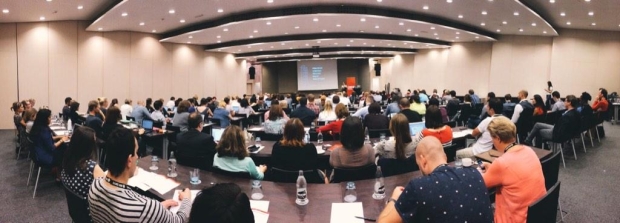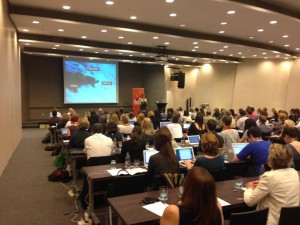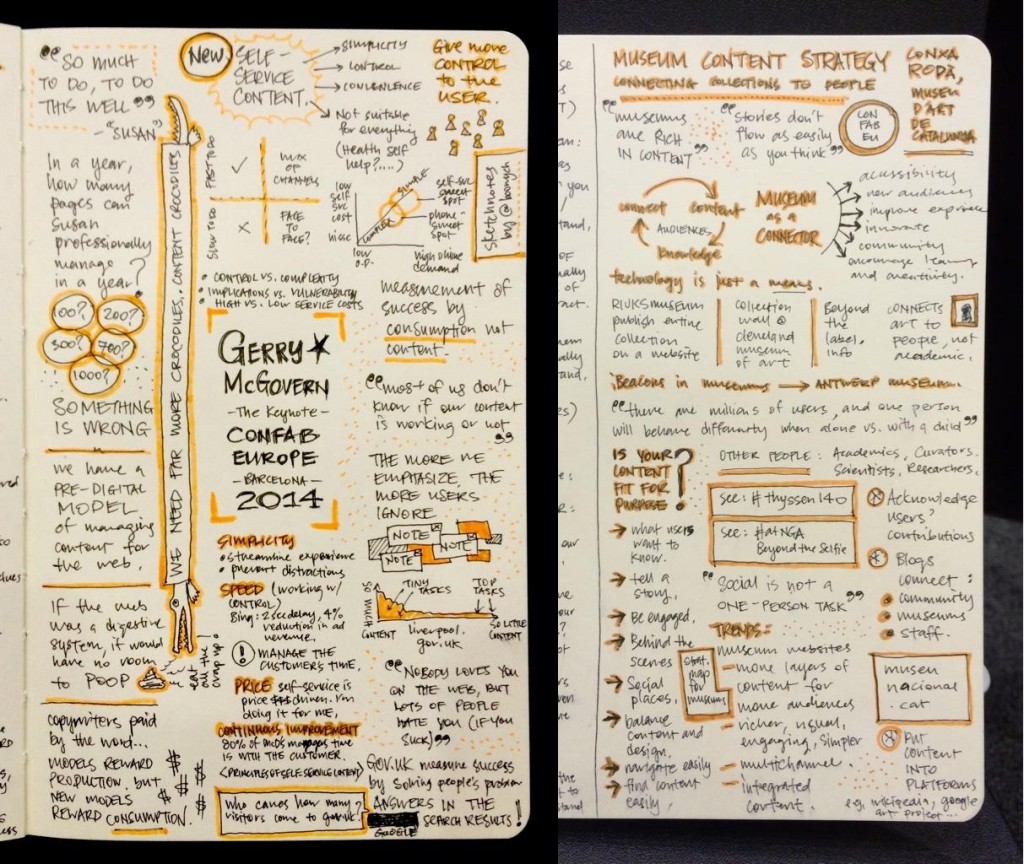Conxa Rodà
Museums are content generators by nature. Our role today as connectors between the collection, the knowledge and the visitors/users is gaining more and more strength and content is our best asset. The only thing is that while it’s true that we, museums, are rich in content, we don’t usually have a developed content strategy yet. Content strategy involves the planning and governance of content within the organisation.
Questions to be asking ourselves
– How can content strategy help us better serve our audiences and help us fulfil our mission / business goals?
– How to start a content-planning process?
– How to get people planning/ creating/ writing/ good quality content
– How to ensure content meets user needs?
– Is the importance of content strategy well understood by our stakeholders?
These and many other questions were dealt with in the Content Strategy Conference, ConfabEU, that we had the luck for it to be held recently in Barcelona and in which the Museu Nacional participated with a talk on Museum Content Strategy. It was the first conference on this topic to be held in a non-Anglo-Saxon country and the second held in Europe, after London.
We lived some days of very high density contents, as corresponds to the topic. I will extract some of what seemed to me to be the most relevant and that can be extrapolated to the field of museums. We will start with the main ideas that were brought up in various sessions and afterwards we will mention the contributions from some specific authors.
10 take-aways about content
– Content needs to be mapped, prioritised, user-oriented and disseminated
– Ensure content meets user needs
– Integrate continuous feedback into content development
– Need of cross-collaboration throughout the organisation and of building a shared perspective
– Be agile and flexible: do have a process but don’t let process be a constraint
– Simplicity
– Need of getting rid of useless, superfluous content (of the “dead wood” said Kate Thomas or “have a crocodile eat your crap” said Gerry McGovern)
– We still create content thought for a specific format. But we don’t know how or where it will be consumed in the future.
– Great content isn’t great until it gets found, consumed and shared
– Sometimes we still apply old working methods to the new digital environment
Excerpts from the keynotes
Kristina Halvorson, Conference Chair and author of Content Strategy for the Web,
defines content strategy as a facilitator and says it guides the “planning for the creation, delivery and governance of useful, usable content”. Among her content principles:
– The content is not for us (it’s for our audience)
– Responsive does not mean reactive
– The story informs the format
Kate Kenyon talked about the need of “bringing new content-thinking to old-world companies”: a content strategist doesn’t just do content strategy, but lots of digital rethinking education for the old-world companies.
Kate Thomas was very clear about the role played by governance regarding content: “Governance is not a document or a committee, it’s a new way of working, governance applies across the content lifecycle; it’s not a checkpoint before launch”.
Sara Wachter-Boettcher talked about co-creating the content strategy, that is to “put the power to decide on strategy, messaging, modelling and more into everyone’s hands -even if they are not content experts- and get meaningful commitment as a result”: ownership leads to engagement.
Jonathan Khan talked about the need to move from a divided model to collaborative agile working, where departments share responsibility for content. He presented the excellent example of Digital by default principles and criteria of the UK Government.
Clara Guasch, from Content Strategy Barcelona MeetUp, recommended not to skip analysis: content comes second.
Hazel Jennings, content strategist at Instagram, highlighted the Instagram principles: “put the community first, simplicity matters, inspire people”.
The closing keynote was delivered by famous author Gerry McGovern. I’ve been reading him since 1996 when he started the New Thinking weekly articles, written with the user in mind when almost nobody else talked about usability, which should in fact be our main concern. His hilarious talk was pervaded with witty statements and slides. You can enjoy them on the Video of ConfabEU Gerry McGovern Keynote. To highlight, two basic powerful ideas:
– Content is what drives the web
– Digital is not a technology, it’s a way of putting customer (visitor, users) experience first
Conclusion: quality content, a magnet for connecting to audiences
Quality content is our best asset. To appeal to our users we deploy a diversity of tools and platforms. But many museums and cultural organisations are still weak regarding content strategy. It happens similarly as it happens with digital strategy. There is much online presence, a lot of actions, it affects the whole organisation but there is still a poor (or non-existent) strategy. The collections are the core of museums, collections are not only about assembling, preserving and researching them, but also and most importantly, to make them accessible to the public, to help the audience to understand and enjoy, to offer multiple interpretations that is, to create and disseminate interesting content, to inspire creativity and participation. Our collections, history, buildings, staff and behind-the-scenes provide us with a treasure repertoire from which to build compelling content. Well played, content strategy is the best glue to connect our museum with the widest audience possible.
As a user, what content would you like museum websites dealt with more? As a museum professional, how do you deal with content strategy inside your museum?Related links
Content Strategy for the Web
The Content Strategist as Digital Curator
Co-directora del Curs d'Estratègia Digital_UOC_Museu Nacional d'Art de Catalunya
Co-directora del congrés CIMED de Museos y Estrategias Digitales












2 Comments
Thank you for this useful wrap-up, insights and references!
I couldn’t attend the Barcelona event but followed on Twitter. I think in most museums we struggle with a huge amount of content and deeply need to apply more strategy!
Thanks for your comment, Adrienne.
Yes, exactly, part of the problem is that museums not only usually lack a content strategy but often we are not really aware of all the content we already have, dispersed throughout different departements (silos;) and platforms, digital or not. So, a lot of work ahead!